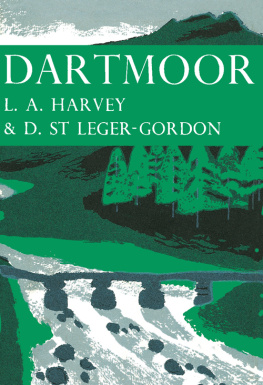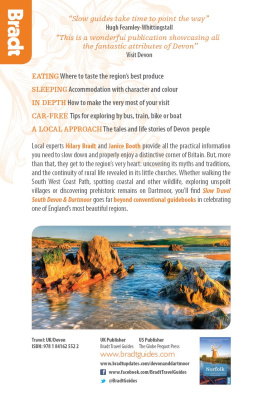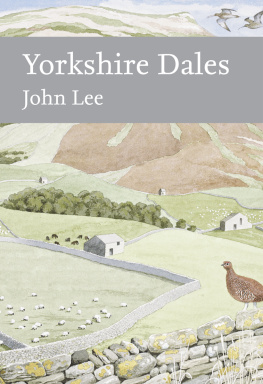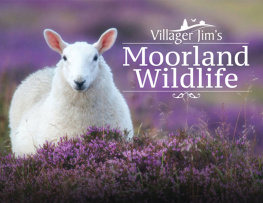JAMES FISHER M.A.
JOHN GILMOUR M.A. V.M.H.
SIR JULIAN HUXLEY M.A. D.Sc. F.R.S.
MARGARET DAVIES D.Sc.
PHOTOGRAPHIC EDITOR:
ERIC HOSKING F.R.P.S.
The aim of this series is to interest the general reader in the wild life of Britain by recapturing the inquiring spirit of the old naturalists. The Editors believe that the natural pride of the British public in the native fauna and flora, to which must be added concern for their conservation, is best fostered by maintaining a high standard of accuracy combined with clarity of exposition in presenting the results of modern scientific research. The plants and animals are described in relation to their homes and habitats and are portrayed in the full beauty of their natural colours, by the latest methods of colour photography and reproduction.
It should be noted that throughout this book Plate numbers in arabic figures refer to Colour Plates, while roman numerals are used for Black-and-White Plates

IN 1951 DARTMOOR was nominated as a National Park. This inevitable act has brought to particular public notice an unique island of upland England about which views are as strongly held as they are diverse.
The competing claims of national defence, water-supply, mineral working, afforestation, hill sheep-farming, public recreation and nature conservation which affect so many of the remoter parts of Britain are here all concentrated in one compact area in the heart of a single county. Should a television mast be allowed to rear its head in this domain of wild nature? Are man-made lakes a desecration or a desideratum? Do planted conifers destroy or enhance the landscape? All these are burning problems.
The romantic moorland-covered granite island of Dartmoor rises in the midst of the rolling sea of Devons farmland. To some its open windy surfaces, sweeping upwards from sodden bogland to boulder-strewn tors are uninviting, even forbidding, and they may hurry across by one of the few main roads to seek the friendly shelter of one of the many villages which nestle around the moorland margin. Others will seek to stay and here attempt to wrest from Nature some of her closely-guarded secretsthe long-disputed origin of the valuable pockets of china clay or even of the granite itself; the relationship between the present vegetation and the remaining fragments of native woodland at the highest levels known in Britain. The heart of Dartmoor is a world of strange isolation, the domain of Dartmoor ponies, of Scottish black-faced sheep. Yet, in contrast with this lonely heartland is a fringe of lively villages, of human social lifevillages like Widdicombe, whose very name spells romance.
Exeter is the gateway to Dartmoor and it is fitting that the University College of the South-West should nourish a group of experts interested in Dartmoors problems. No such group can be successful without skilled leadership and close collaboration. Such leadership is provided by Professor L. A. Harvey, and the close and careful integration of his text with the learned and well-written contributions of Mr. D. St. Leger-Gordon has made the work a balanced and consistent whole. The story of mans activities rises naturally from the study of the physical environment and background of natural history, and the Editors take pride in presenting this comprehensive regional synthesis in the New Naturalist series.
THE EDITORS

MANY BOOKS have been written about Dartmoor, and the writer of each has approached his task from his personal angle. I, too, have my viewpoint, from which by training and inclination I look on my surroundings. As an ecologist I observe and delight in the habits and community relationships of plants and animals. Frankly, this, my trade, is also my escape from the irksome burden of being human. The reader therefore who shares the complaint expressed in his Spectator review of the companion volume, Snowdonia, by Mr. Clough Williams-Ellis, that Peacock was sacrificed to slugs and beetles, must be prepared to witness similar immolations here. I am not reconciled to the view of man as the centre about which the affairs of the world revolve. The account I present of Dartmoor is therefore as objective as I have been able to make it, relating directly to the plants and animals which live there, and to the ways in which our human arbitrariness may affect them.
Inevitably much of what I have included is not my own. No individual can hope to present a portrait of a region without the aid of innumerable friends and mentors. None but I may be held responsible for opinions I have expressed, though many have helped to mould these, by letter, by conversation, by their published work. I am particularly indebted to Lady Aileen Fox and the late Colonel Ransom Pickard, without whose help the account of the archology of the region could not have been written. Colonel Pickard provided the facts, Lady Fox invaluable criticisms and corrections of my manuscript. Mr. H. G. Hurrell sent me much information about the birds and mammals, and has been perpetually fertile in encouragement and suggestion. Mr. C. A. Wilson, County Pests Officer, generously ransacked his files to provide information about the spread of grey squirrels in South Devon, while Mr. C. C. Whitley and Lt.-Col. W. G. Clarke, Masters respectively of the South Devon Hunt and the Dartmoor Foxhounds, responded generously to my inquiries about foxes seen in their country. Mrs. W. B. Yeats and Messrs. A. P. Watt & Sons have generously permitted me to quote the lines from Into the Twilight. (The Collected Poems of W. B. Yeats) which appear on p. 3, to them my thanks. The Map of the Geology of South Devon was drawn by Miss Mary Stonehouse, while for that of the Dartmoor National Park I am indebted to Mr. Geoffrey Clark and the Devon County Council Planning Department. Mr. E. H. Wares photographs speak for themselves. I must, however, express to him my deep gratitude for the many hours of patient care he expended on them. I might almost say that he is responsible for the completion of this book; for all too frequently it has been the thought of his contribution to it which has lifted me over the more difficult passages of my own. My thanks also to the Editorial Board, who, individually and collectively, have been so patient and encouraging, and to countless others who must remain unnamed only for lack of space. Finally, to Clare Harvey my warmest thanks, for her knowledge of botany and above all for the help and spiritual sustenance which only a wife can offer.
L. A. HARVEY
University College of the South-West,
Exeter
June 1950
APPROACH TO DARTMOOR

SPRING COMES EARLY in the warm west, and by March the wild Daffodils may be blooming at Steps Bridge and the Bracken shooting under its rusty pall of last years withering. Soon the scrub oaks begin to unfold their buds, and then the copses and valley woods become a riotous patchwork of translucent colour: red, orange, yellow, bronze and every imaginable shade of green. The Bilberry flowers come, to hang like waxen pale lanterns, the Bracken and Oaks mature to a darker green, a deeper shade, and high summer is here. Asphodel and Cotton grass brighten the bogs, and, to the seeking eye, the paler delicacies of Sundews, Butterwort and Bog Pimpernel display their exquisiteness. Soon the moors begin to flower; first the deep purple of Bell Heather and the pale rose of Cross-leaved Heath, and then the great sweeps of the true Heather in its many tints of pink. The fruits ripen on the Bilberries till the plants look as if hung with little round sloes, each set stiffly on the wiry stems. On the Rowans at the stream-sides great flat bunches of berries turn bright red and the trees seem as if aflame.










